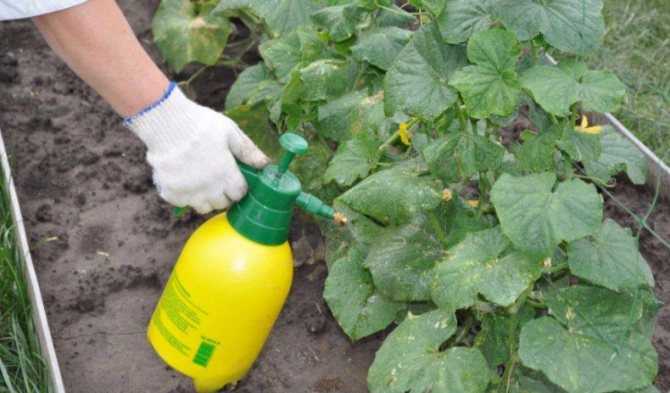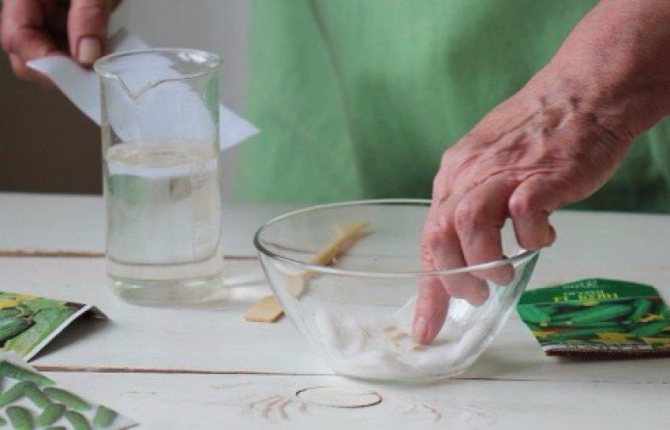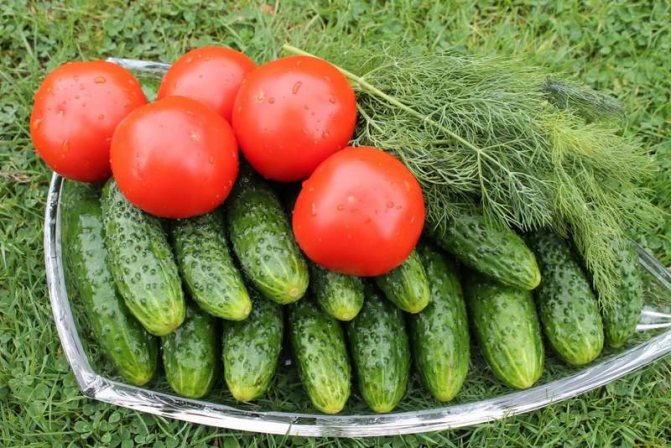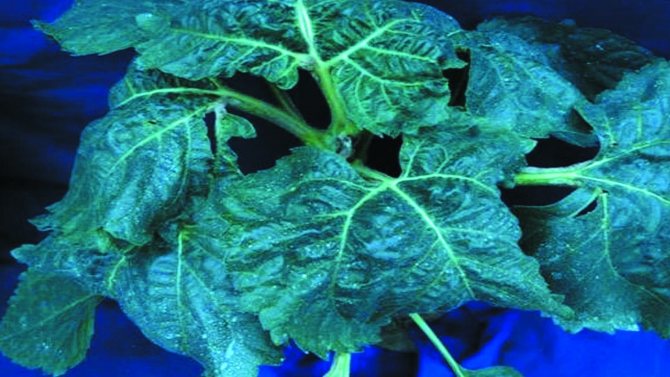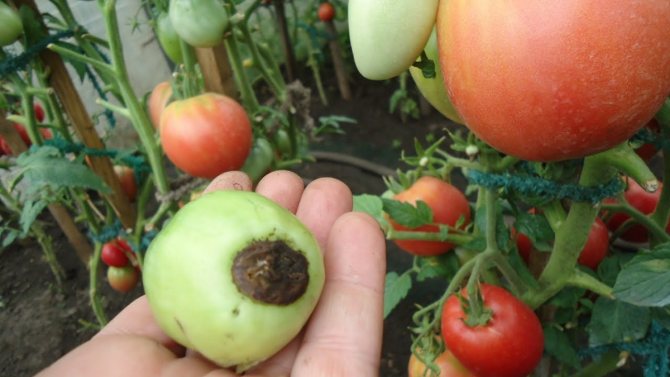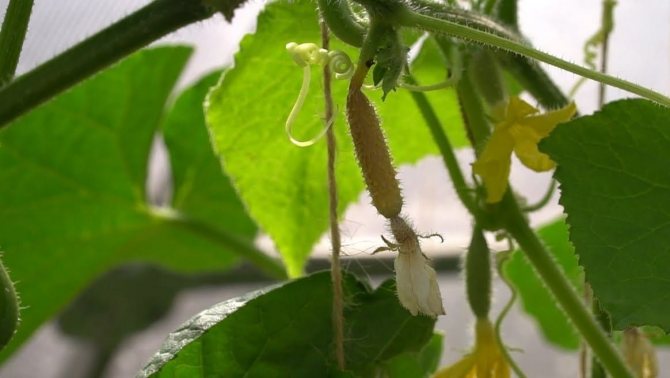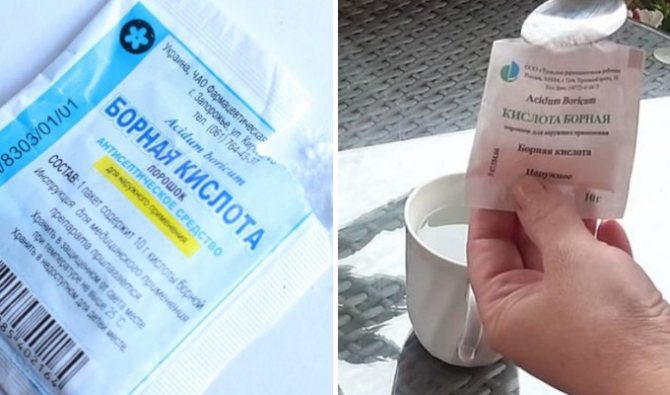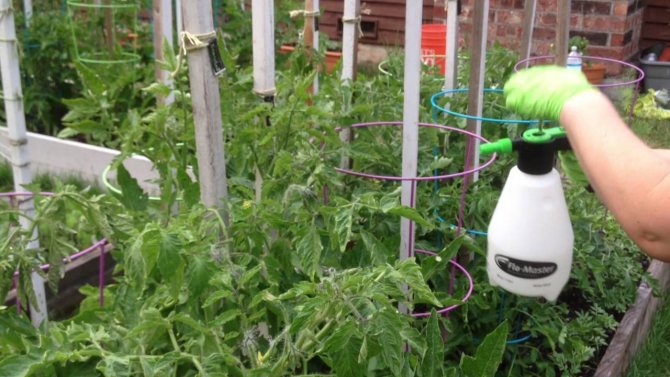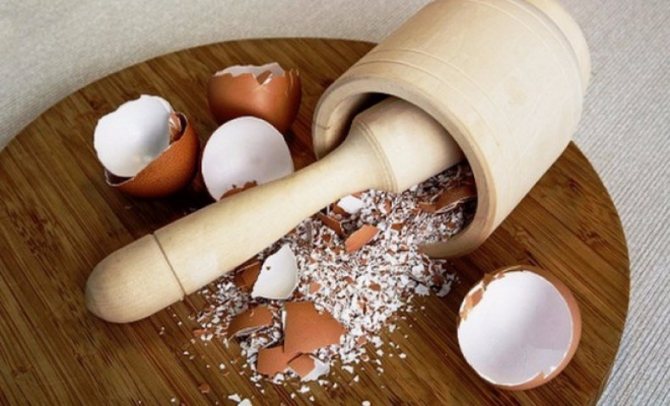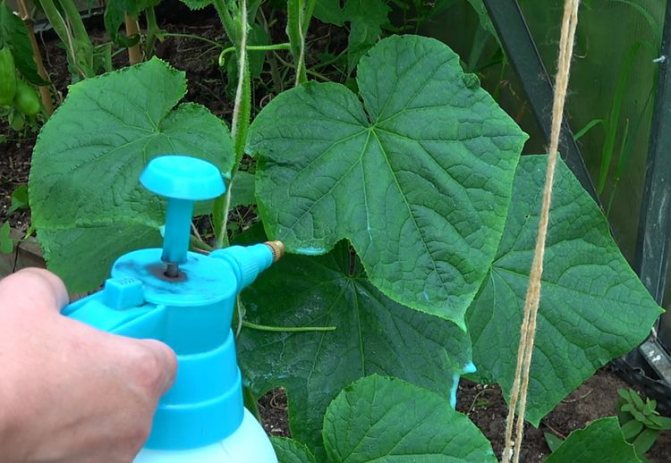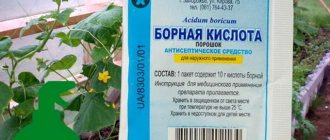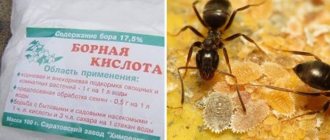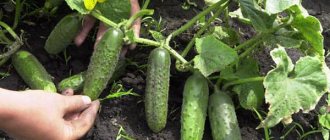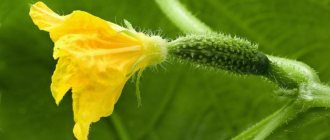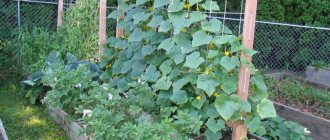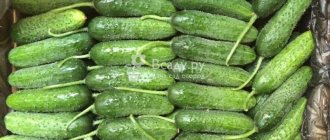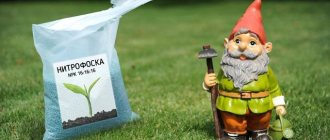For normal vegetation, cucumber plants need boron. The importance of this microelement is undeniable, because it, while quantitatively increasing the yield, at the same time acts as an effective means of combating fungal microorganisms. Therefore, experienced gardeners feed the cucumber culture with boric acid.

Photo: https://img11.postila.io/data/b0/56/40/34/b0564034baa08d2e9d2625c388c191d43fa3fb87dc0e0ea5a43d2a8ae9a66111.jpg
The benefits and harms of boric acid
The use of boric acid as a fertilizer has the following beneficial effects on cucumbers:
- destruction of pests;
- healthier foliage due to stimulation of the process of photosynthesis;
- strengthening the roots;
- accelerated growth;
- an increase in the number of ovaries, an increase in yield;
- plant resistance to temperature extremes;
- improving the taste of cucumbers;
- extension of their storage period;
- stimulation of nitrogen assimilation.
A sufficient amount of the microelement boron contributes to the enrichment of the soil with oxygen and saturation of cucumbers with calcium.
Acid can only harm plants if it is consumed in excess. Correct and timely use of the substance brings tangible results. The feasibility of using this tool is confirmed by the factors listed below.


Improving photosynthesis
Foliar feeding of cucumbers with boric acid awakens natural processes in the green of cucumbers. As a result, shoots and leaves become strong, green and healthy in appearance, the development of new foliage is accelerated.
Stimulating growth
The tool has a beneficial effect on the early germination of cucumber seeds. Lack of boron leads to the death of the top of the bush, which means to stop the growth of the plant.
Boost immunity
The use of the drug increases the resistance of crops to fungal diseases, as well as to other external factors that are unfavorable for cucumbers. Plants become less fastidious to care for, healthier and stronger.
Ovary enlargement
Boric acid contributes to the fact that the set fruits become stronger, hold better, and their number increases. If a deficiency of the element occurs at the time of the formation of the ovary, it may simply crumble.
Timing and preparation of the solution


The additive should be used in case of a lack of an element in the soil or, if necessary, to improve the quality of sowing. You can water with acid in any of the growing seasons of the seedlings, both after harvesting the fruits and before planting in the ground. Before moisturizing, you should properly prepare the solution, following several rules:
- Fertilizing cucumbers with boric acid has the best effect when watering in dry, calm weather, before 12 noon or from 19 to 23, so that the rays do not harm wet leaves.
- It is worth spraying cucumbers twice: the first time during flowering, the second after the formation of ovaries.
- It is important to remember that the acid does not dissolve in cold water, so the liquid must be preheated to a temperature of + 60 ° C.
- For half a glass, there is one teaspoon of clear powder, or five grams per liter. In the case of the liquid version, you should dilute one spoon of 1% solution in a glass of warm water. At this stage, it is important not to overdo it with concentration, otherwise there is a risk of poisoning the plants.
Add two liters of cool water to warm water and allow the liquid to cool down to a temperature of + 25 ° C. Spraying cucumbers with boric acid should be done right there, otherwise the substance will precipitate and the preparation will have to be prepared again.
Note!
Gardeners usually use fertilizer when the first flowers or fruits appear, then it will have the best effect.
It is important to be careful about the concentration of a substance in water. If the proportions are not observed, then the plants may die. An excess of boron in the soil affects plantings in about the same way as its acute deficiency.
Signs of Boron Deficiency in Cucumbers
Cucumber crops especially need feeding during dry periods. Signs of an insufficient amount of a trace element can be seen on cucumbers with the naked eye:
- plant growth slows down;
- Boron deficiency has the greatest effect on foliage: young leaves become smaller and denser in appearance, and old ones change color, turn pale and turn yellow at the edges, become stained;
- the number of flowers and ovaries decreases, some of them bend or disappear;
- the plant stops throwing antennae;
- shoots become fragile and weak;
- rot, fungal diseases appear.
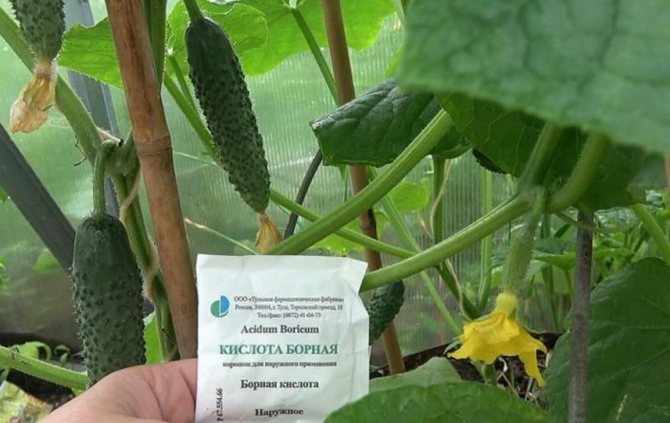

Disease prevention
Bad weather provokes disease outbreaks in cucumbers in the greenhouse and in the ground. It is possible to avoid mosaic, bacteriosis, rot (gray, white), powdery mildew and some other diseases with the help of preventive treatments of cucumber bushes with boric acid and potassium permanganate.
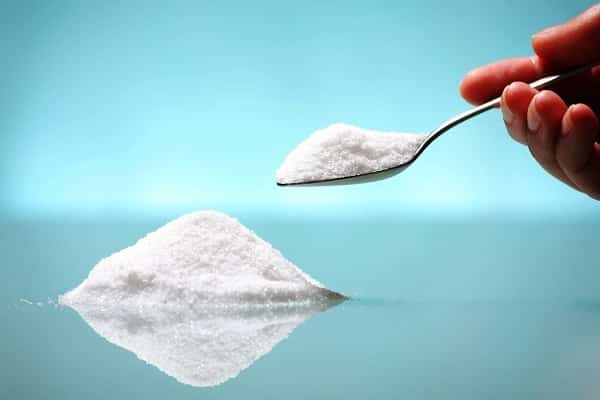

Acid (tablespoon) is required to be diluted in a glass of hot water. Prepare 1 bucket of settled tap water, add a little potassium permanganate to it. The color of the water should turn pale pink. Pour a glass of diluted boric acid into a bucket. Another drop of iodine into the water. 35 drops are enough for a bucket.
See also
Description of the Ant cucumber variety, its characteristics and productivityRead
This solution can be sprayed on healthy plants to prevent diseases and feed cucumbers when the first symptoms of fungal diseases appear on the leaves and stems. Processed cucumber bushes will cope with the disease in 2-3 days and grow.
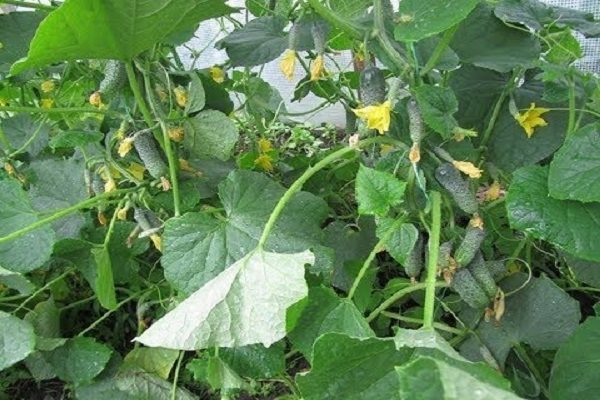

Preparation of boric acid solution: recipes
When diluting the powder, it is necessary to strictly observe the proportions, otherwise the use of the working solution may harm the health of the plants. The composition is prepared as follows:
- 10 liters of water are taken for 5 g of the product;
- 1 liter of water is heated to 50 ° C;
- the powder is carefully diluted in a warm liquid, after which the rest of the cold water is added.
Consumption of the composition - 1 liter per 10 sq. m of cucumber beds.
Boric acid dissolves exclusively in hot water; undissolved particles can burn the leaves.
To protect against infections - iodine solution
Boron performs antiseptic functions, allowing you to get rid of rot, powdery mildew and other fungal diseases. In conditions of high humidity and low temperatures, the following mixture is effective:
- boric acid solution - 10 l;
- potassium permanganate - 2 g, i.e. the water should turn slightly pink;
- iodine - about 40 drops.
Allow the mixture to cool before adding the last ingredient.
Spraying cucumbers is recommended in the morning or in the evening in cloudy, calm weather.
For better pollination
Pollinating insects can be attracted by sweet formulations. To prepare the solution, take 0.5 kg of sugar and 5 liters of pre-prepared heated fertilizer. Sugar is stirred until complete dissolution. Processing is best done before flowering.
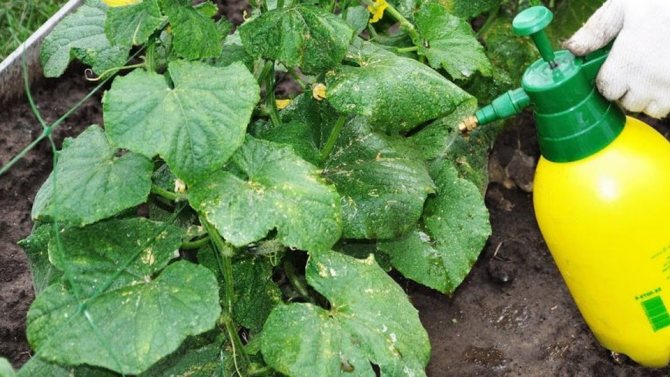

Boron powder and brilliant green
To prevent cucumber diseases - powdery mildew, late blight and others - during the period of bud formation, it is recommended to spray the culture with a mixture of 1 liter of water, a few drops of brilliant green and 0.2 g of boron.In addition to the antifungal effect, the agent promotes the earlier formation of the ovary.
Fertilization at the stage of cultivation
If you have chosen the seedling method of growing cucumbers, then you can carry out foliar processing of the seedlings just before planting them in the soil in the garden. In this case, you can use the methods for preparing a solution for irrigation, which were given earlier, the ingredients and proportions remain unchanged.
It is worth saying that with such watering, the plant will still need to re-spray the cucumbers with a solution using boric acid. Usually this period falls on the moment the first 3-5 fully formed leaves appear on the bush.
How to get rid of ants with boric acid
This remedy is also successfully used against insects, most often ants, which try to settle in cucumber beds. You can get the bait for them as follows: warm up half a glass of water, add 5 g of boron, 2 tablespoons of sugar and 1 teaspoon of any jam. Pour the liquid into a convenient container, cover slightly and place on the garden bed.
You can cook and put dry balls of boiled potatoes (3 tubers), boiled yolks (3 pcs.) And 10 g of boron in places where ants accumulate.
Other recipes with various additives
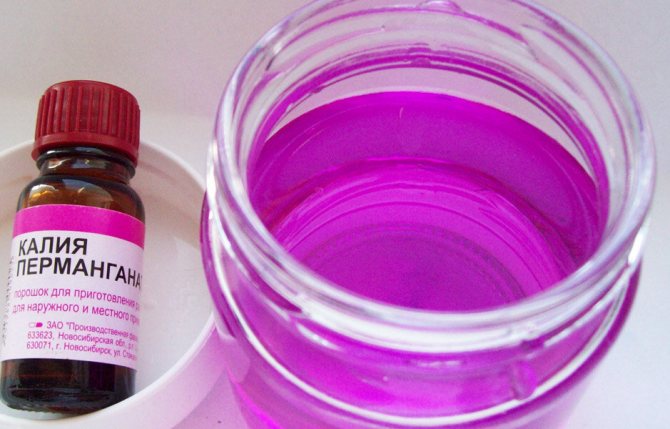

Such foliar dressing has many cooking options with different properties. To attract pollinating insects, it is enough to dilute one hundred grams of honey or sugar in ten liters of water and spray the cucumbers with the resulting colloid. This method will accelerate cross-pollination of seedlings, leading to early fruiting.
Popular formulations:
- To protect your plantings from various diseases, such as mosaic leaves, powdery mildew rot, you can feed the plants with a mixture of boric acid with a solution of potassium permanganate and iodine. Manganese has antiviral properties, which makes it extremely useful in the garden. Method of preparation: mix a tablespoon of boron with 10 liters of water and add a little potassium permanganate and 40 drops of Lugol's solution (pharmaceutical iodine). Treatment with such a drug can be both systematic and therapeutic.
- To combat aphids and pathogens, plantings can be treated with a special recipe. For preparation, you need to mix half a teaspoon of the drug with two tablespoons of ammonia (sold in pharmacies as ammonia) and add a little potassium permanganate. You need to process at the bud stage, fifty milliliters per plant.
- You can increase the strength of the fertilizer by mixing one and a half grams and several crystals of potassium permanganate in two hundred milliliters of hot water. The resulting mixture must be diluted in a glass of milk, add 60 drops of iodine and one tablespoon of urea. Bring the volume to ten liters by mixing with cold water. Treatment with such a composition increases immunity to fungal diseases and significantly accelerates growth. Watering costs about one hundred milliliters per cubic meter of land.
Note!
If you mix two drops of ordinary pharmacy greenery with 0.2 grams of boric powder in a liter of water and spray the seedlings before ripening, you can reduce the risk of infection with powdery mildew and late blight.
The fact is that the brilliant green solution has antiseptic properties and protects the sprouts by stimulating the appearance of the ovary. All feeding with boron must be done systematically, otherwise the effect will simply not be there.
Application methods
There are several options for the use of boric acid, used in different periods of the growing season of plants.
Seed treatment
For the first time, this fertilizer is used even before the planting of cucumbers. Before sowing, it is necessary to treat the seed material with manganese or ash.After that, it is recommended to soak them in a weak acid solution, leaving them for 6-12 hours, and then dry them well. You can prepare the mixture as follows: take 0.2 g of acid for 1 liter of hot water. Then cool the solution, wrap the seeds in a cloth and dip into the prepared liquid. This procedure allows you to protect plants from fungal diseases and improve their germination.


It is necessary to strictly observe the proportions of substances, not exceeding the concentration of boric acid.
If the seeds are planted directly into the ground, then you need to fertilize the soil. For this, the following composition is prepared: two handfuls of onion peels are infused for 4 hours in 1 liter of hot water, then mixed with the same volume of wood ash, 5 g of soda, 1 g of manganese and 0.2 g of boric acid powder are added to 1 liter of this infusion. In such a substance, the seeds can be soaked for several minutes, and then planted on a bed treated with the same solution.
Spraying
Leaf processing must be carried out on both sides. The temperature of the solution should be close to 23-24 ° C. It is recommended to spray already grown cucumbers in two stages:
- during the appearance of buds, before flowering;
- at the time of the formation of the ovary.
To prepare a working solution for 0.5 teaspoon of boric acid diluted in 10 liters of water, take 0.5 liters of a suspension of chlorella, previously diluted with 1 liter of heated water. Spraying is carried out using a spray bottle.
Chlorella is an alga that stimulates the strengthening of plant immunity.
You can spray the cucumber bushes with a different mixture. A glass of water is taken: 0.5 tsp. boric powder, 2 tbsp. ammonia, several crystals of potassium permanganate. This mixture is good for strengthening the immunity of cucumbers.
Feeding Tips
So that feeding does not go to harm, it is worth following some rules:
- In no case should you independently increase the proportions of boric acid content in the soil.
- It is not necessary to spray or spray cucumbers with boric acid on a sunny day, but best of all in the evening, otherwise burns on the leaves may appear. It is worth once to water the bushes under the scorching sun, there is a risk of losing the harvest.
Many are interested in the question of whether spraying with boric acid can harm the culture, especially novice gardeners are interested in foliar feeding. The answer is unequivocally negative, on the contrary, a folk remedy is aimed at increasing the yield of a vegetable, as well as significantly improving its quality.
Boric acid treatment time
Experienced summer residents advise - to achieve a result, use a solution of the drug 3-4 times per season:
- before planting cucumbers (if the seedlings are grown separately), but no later than the appearance of the fifth leaf;
- during the appearance of buds, to prevent them from falling off and drying;
- during the flowering period of cucumbers to attract bees, with the addition of sugar;
- at the stage of fruit emergence.
When using other fertilizers in parallel, make sure that they do not contain boron.
Preparing for planting and watering
It may be interesting Problems of ovary of greenhouse cucumbers Feeding cucumbers during flowering and fruiting How to pinch cucumbers in a greenhouse correctly: step by step
The miraculous properties of the substance do not end there, it is also used to disinfect the rudiments of future crops. Such prevention helps:
- avoid problems with green plantations in summer;
- seeds germinate earlier.
You just need to hold the seeds for twelve hours in a solution of one gram of acid per liter of water and plant them.
In order for the seedlings to take root better, you can fertilize it before introducing the planting material into the soil. To prepare a useful substance, it is necessary to insist onion peel in a small amount of water and mix the resulting solution with ash. The mixture should be added to the soil a few days before the cucumbers are planted.
To get the maximum effect from boric acid, you should apply a few simple rules and principles for spraying:
- The first watering of cucumbers with boric acid should be done after the culture has released at least four true leaves.
- The second time to feed the cucumbers with boric acid is best at the budding stage or at the beginning of flowering. If the culture is not self-pollinating, then add sugar or honey.
- The third time should be watered during the formation of ovaries in order to supply the plant with the necessary nutrients.
- In the case of cultivation on sands or peatlands, a fourth top dressing can be applied, using half the usual dose of boric acid per bucket of water.
- The water temperature for irrigation should be around + 25 ° C, otherwise rot may form.
Together with boron, superphosphate and ash can be added to the soil to get the best effect. It is worth sprinkling on the leaves from the upper and lower sides so that a fungus does not form in the shade of the shoot, distribute the solution evenly. It is necessary to take into account the fact that the seedlings are not able to store the substance, therefore it is important not to forget to bring it in on time.
Note!
Boric acid can seriously accelerate the process of fruit formation, since most often cucumbers in vegetable gardens are cross-pollinated, and bees are the carriers of pollen.
To lure these beneficial insects, it is enough to use a recipe for foliar feeding with honey or sugar. For cooking, combine ten grams of bromic acid with five hundred grams of honey or sugar in five liters of water. The yield when watering with such a solution increases by twenty percent.
What else can you spray with boric acid
It is not worth using a solution of boric powder exclusively for cucumbers. Spraying or watering has a good result when growing the following crops:
- Grapes. As a result of the procedures, the number of ovaries increases.
- Strawberries and garden strawberries. The berries are fleshy, sweet, if processing is carried out twice a summer.
- Tomatoes (tomatoes).
- Vegetables - beets, potatoes, carrots, cabbage, onions.
- Fruits - apples, plums, pears, cherries.
- Berry bushes - raspberries, gooseberries, various types of currants.
Correct use of boric acid allows you to accelerate the growth of seedlings, protect them from diseases, increase yields and improve the taste of fruits. The main condition is that gardeners must always observe the correct proportions!
Tips & Tricks
A few tips for summer residents on the use of boric acid:
- Boric acid powder will help get rid of house ants. It is necessary to scatter the drug in those places where insects most often appear: behind the baseboards, near the trash can, under the kitchen tables. For the best effect, you can mix the acid with sugar or jam.
- A solution of boric acid can be used to process not only cucumbers, but also tomatoes, potatoes, cabbage and other vegetables.
- If you treat strawberries with a standard boric acid solution twice a season, the berries will be sweeter.
Signs of overdose
Excess boric acid when growing cucumbers is called boric toxicity.
Learn how to properly grow cucumbers.
This pathological condition of the bush manifests itself in several cases:
- excess of the amount of solution;
- frequent treatments;
- the number of applications is more than necessary;
- violation of the preparation technology of the product.
An excess of boron in the soil can be determined by the following symptoms that appear on the cucumber bush:
- yellowing, twisting and falling of adult leaves;
- the appearance of signs of chlorosis on young foliage;
- a small number of full-fledged flowers with an ovary.


Boric acid overdose is difficult to correct. To avoid problems, you need to responsibly treat feeding even at the stage of preparation.You can flush the soil with plenty of water, which with some degree of probability will clear it of excess boron.
Seed treatment
Obligatory disease prevention - seed treatment before sowing. It helps to avoid problems with cucumbers in the garden during the summer. Seeds soaked in boric acid germinate faster. To prepare the solution, dissolve 1 g of acid in a liter of hot water. Keep the seeds in liquid fertilizer for 12 hours.


Symptoms of an overabundance of boron in cucumbers
For cucumbers, not only boron deficiency is dangerous, but also its surplus. If there is a lot of boron in the ground, or at least enough, and regular application of additional fertilizers with this element is carried out, the plants may also suffer. It will accumulate in the leaf blades, causing burns, which will lead to a decrease in the productivity of the bushes.
The main signs of a boron overdose:
- necrosis along the edge of the leaves and their twisting;
- delayed development;
- leaves grow in the form of domes;
- foliage color lemon yellow;
- necrosis can be seen between the veins on the leaves;
- the leaves fall off quickly, even if they are young.
If such symptoms are noticed, it is necessary to stop the boron application for several weeks, carry out timely watering and provide the plants with more attention (cleaning weeds, loosening the soil). Then the cucumbers can gradually recover.



